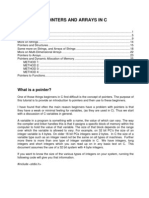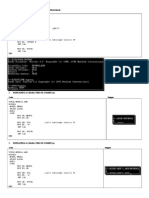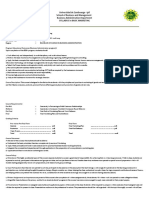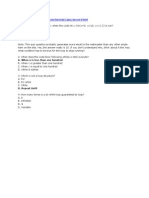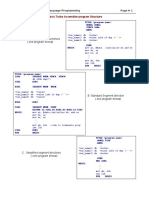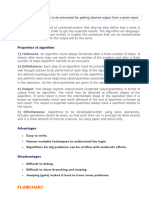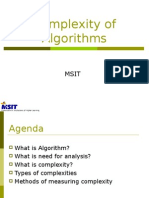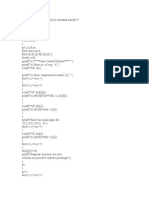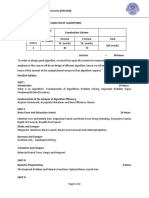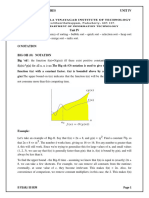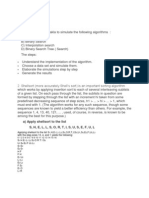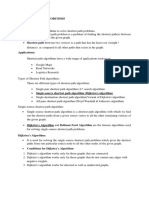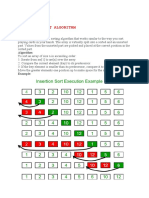0% found this document useful (0 votes)
827 views30 pagesSorting Algorithm in C-Bubble Sort and Selection Sort
This document discusses two sorting algorithms: bubble sort and selection sort. Bubble sort works by repeatedly "bubbling up" the largest value to the end of the array through pairwise comparisons and swaps over multiple passes. Selection sort finds the minimum element and swaps it into the first position on each pass. While simple to implement, both algorithms have quadratic time complexity and perform poorly on large data sets. The best algorithm depends on characteristics of the data needing sorting.
Uploaded by
Shrishail KambleCopyright
© Attribution Non-Commercial (BY-NC)
We take content rights seriously. If you suspect this is your content, claim it here.
Available Formats
Download as PPT, PDF, TXT or read online on Scribd
0% found this document useful (0 votes)
827 views30 pagesSorting Algorithm in C-Bubble Sort and Selection Sort
This document discusses two sorting algorithms: bubble sort and selection sort. Bubble sort works by repeatedly "bubbling up" the largest value to the end of the array through pairwise comparisons and swaps over multiple passes. Selection sort finds the minimum element and swaps it into the first position on each pass. While simple to implement, both algorithms have quadratic time complexity and perform poorly on large data sets. The best algorithm depends on characteristics of the data needing sorting.
Uploaded by
Shrishail KambleCopyright
© Attribution Non-Commercial (BY-NC)
We take content rights seriously. If you suspect this is your content, claim it here.
Available Formats
Download as PPT, PDF, TXT or read online on Scribd
/ 30

